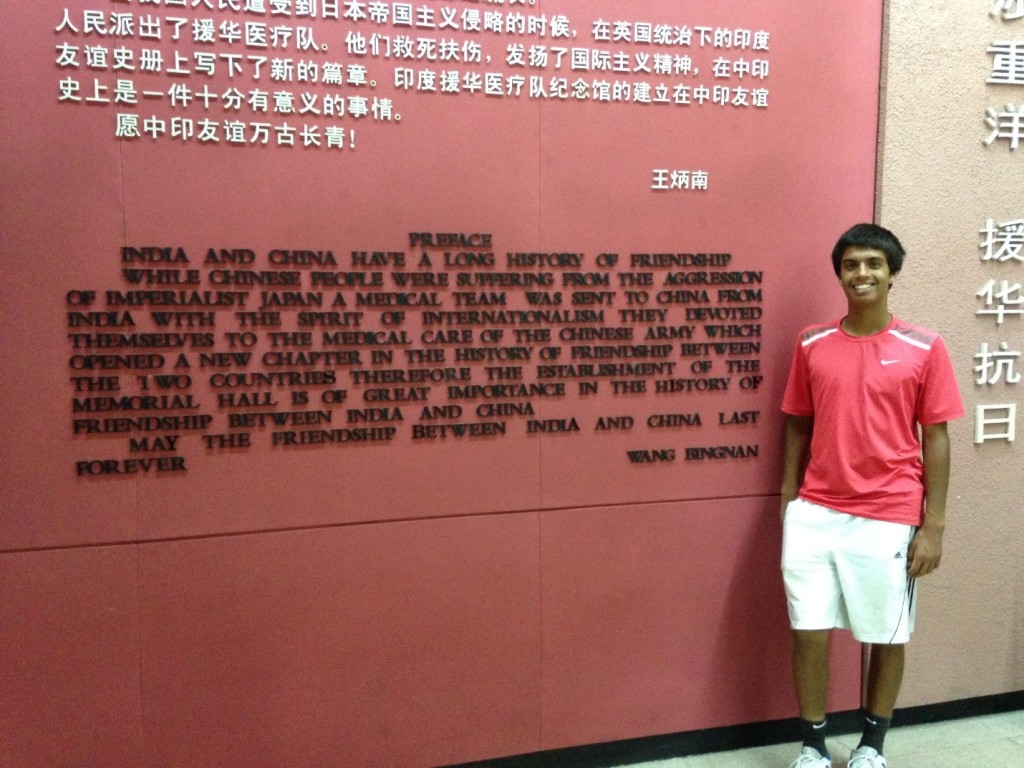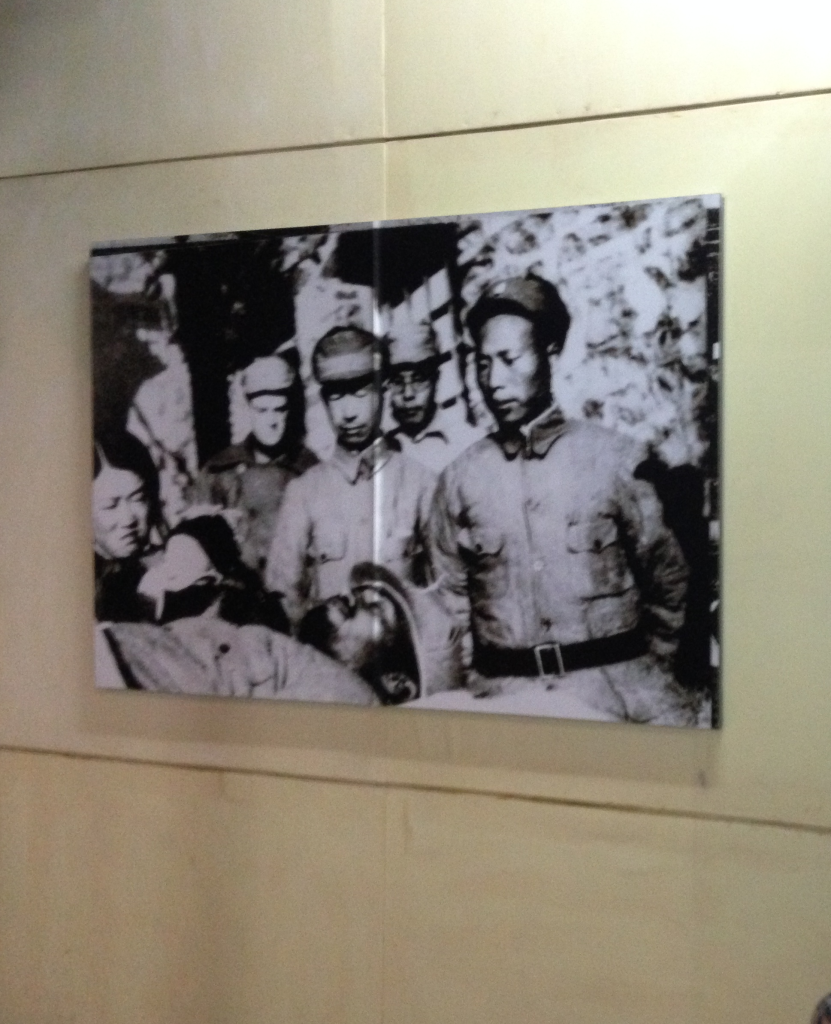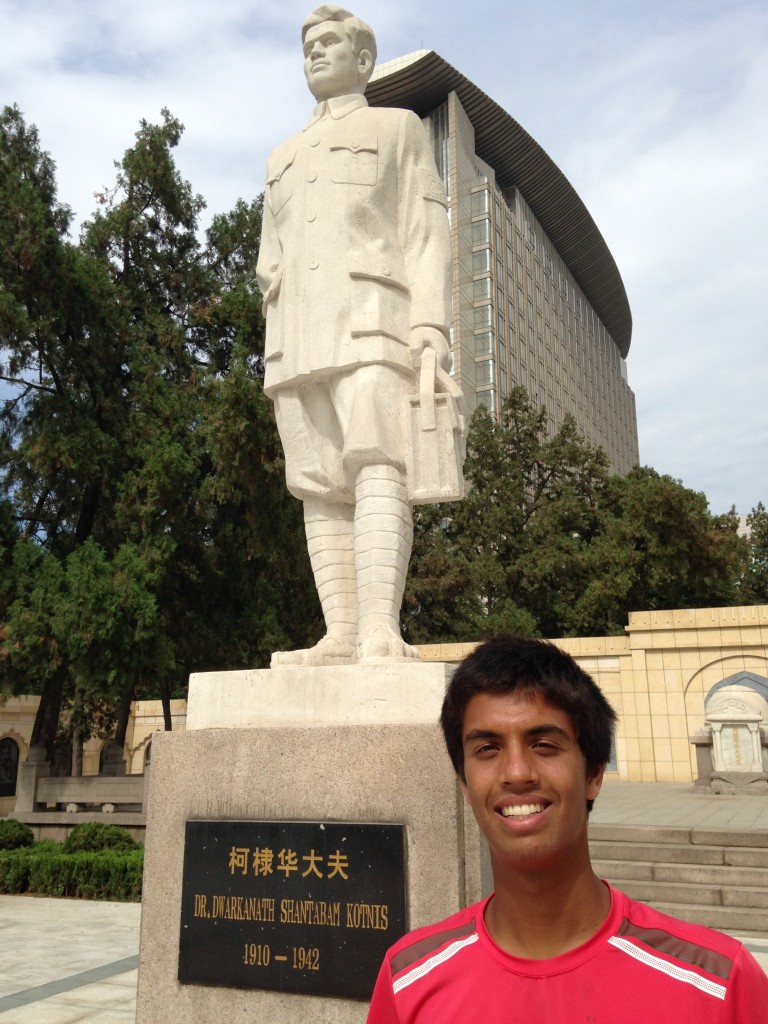Over the years while learning Chinese, I had heard of the story of Dr. Dwarkanath Ko tnis and the Indian Medical Delegation that had helped China during World War II, so I had made up my mind to use one of my free weekends to visit Shijiazhuang, the site of their memorial. With two weeks to go in my China stay, I decided to use the weekend of July 5th to schedule the visit.
tnis and the Indian Medical Delegation that had helped China during World War II, so I had made up my mind to use one of my free weekends to visit Shijiazhuang, the site of their memorial. With two weeks to go in my China stay, I decided to use the weekend of July 5th to schedule the visit.
One of the most impressive things about China is the ease with which a foreigner (even with a limited understanding of Chinese) can make detailed plans and execute them to perfection. Three days before my travel, I made sure to stop by the China Rail Kiosk right outside the North Entrance of Tsinghua to buy my ticket. One of my colleagues at IIIS had warned me to book tickets in advance, and boy, was he right! A common misconception that people have regarding China is that, due to extensive “building sprees” that the government has undertaken in the past few decades, many utilities go unused. On the contrary, nearly all of the trains were full; I realized that if I had waited even a day longer, I might not have been able to get a ticket.
I finished my Saturday morning tennis practice at Beijing Sports University, jumped into a cab and headed straight to Beijing West train station. I found the entire process similar to boarding an airplane in the U.S.; I had to go through security and find my “terminal,” with the entire thing taking about 45 minutes. Luckily for me, I caught the train on time. I read that the high speed r ail construction only began in 2008; in the few years since, China has built 10,000 km of high speed rail tracks.
ail construction only began in 2008; in the few years since, China has built 10,000 km of high speed rail tracks.
In China, my foreign looks always invite curious stares, and this travel was unsurprisingly no different. Although I’m still far from fluent, my ability to converse in basic Chinese probably compounded such stares, leading to a few very interesting conversations. On this train ride, the lady sitting across the aisle from me was quite touched that I was visiting the Memorial to honor American and Indian doctors who lost their lives while helping China during World War II.
The Shijiazhuang taxi experience was a pleasantly uncomplicated. Even before I could pronounce Leishi Lingyuan, the taxi driver knew that I was in town to see one of the most famous attractions, and I soon arrived at the Memorial Park. The first thing that grabs a visitor’s attention is the giant memorial to the soldiers martyred in World War II. To the left is a memorial to Dr. Norman Bethune, who was the leader of the foreign medical delegation and to the right is the memorial to Dr. Dwarkanath Kotnis. Next to the m
emorial, there is an entire building housing priceless exhibits such as the letters, medical instruments and other personal items of the Indian Medical delegation. There are many precious letters written by Chairman Mao Zedong to Pandit Jawaharlal Nehru thanking him for sending the Indian medical delegation. Dr. Dwarkanath Kotnis is from Solapur, the same town where my grandfather, Mukund Ajoba was born. The buildin g housing the documents of the Indian medical delegation contained some priceless documents.
g housing the documents of the Indian medical delegation contained some priceless documents.
Unfortunately, the harsh wartime working conditions took its toll. After four years of tireless work, Dr. Kotnis died because of an epileptic seizure. In a short span of four years, he had made a monumental contribution to helping China. In spite of his hectic medical schedule, he had found time to learn the Chinese language and married Guo Qinglan, a nurse, who was by his side till the very end. Visiting the Martyr’s Memorial cannot but make me feel how monumental were the contributions and sacrifices of these generations and how blessed are we to be living in such secure and comfortable surroundings. In 1938, when Pandit Nehru requested the five doctors to travel to China and provide medical aid, what must have been going through their minds as they traveled to a far and distant land, where the language spoken, food eaten and social norms and customs were completely unlike anything they had ever seen before. Given the circumstances in 1940, when the entire world was engulfed in a conflict, there must have been a sense of foreboding as they said their last goodbyes, because it was uncertain if they would ever get a chance to come back to India again. Drs Kotnis, Atal, Cholkar, Basu and Mukherjee are shining examples of selfless service, a concept that seems so far away to my generation.

cheap oakleys
Thanks very interesting blog!